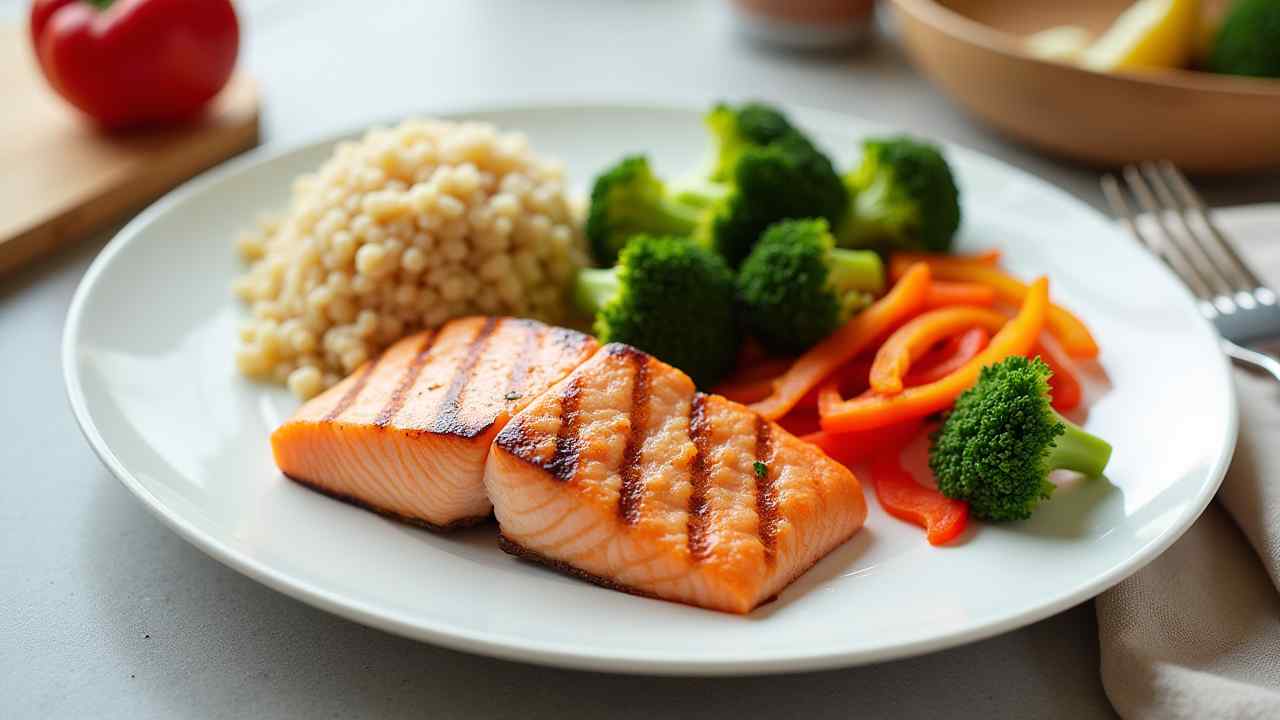
⚖️ The Low-GI Diet for PCOS: A Complete Guide to Managing Symptoms
⚖️ A Guide to the Low-GI Diet for PCOS (Managing Symptoms with Food) ⚖️
❗ Medical Disclaimer: This guide is for informational purposes only. Polycystic Ovarian Syndrome (PCOS) is a medical condition that requires professional care. Always work with your doctor and a registered dietitian to create a management plan that is right for you.
PCOS is a common hormonal disorder. It can cause a range of challenging symptoms. A key issue for many with PCOS is insulin resistance. Fortunately, your diet can be a powerful tool for managing this.
The low glycemic index (GI) diet is a highly recommended approach. It focuses on foods that help stabilize blood sugar. This can have a positive ripple effect on your hormones. Let's explore how a low-GI diet for PCOS works. ✅
🤔 What is the Connection Between PCOS and Insulin?
To understand the diet, you must first understand insulin's role. Many women with PCOS have insulin resistance. This means their body's cells do not respond properly to the hormone insulin. This causes a problem.
Your pancreas has to work harder. It pumps out more and more insulin to compensate. These high levels of insulin in the blood are called hyperinsulinemia. This is where the issues for PCOS begin.
High insulin levels can signal the ovaries to produce more androgens. These are male hormones like testosterone. Excess androgens are what cause many PCOS symptoms. This includes irregular periods, acne, and excess hair growth.
💡 How Does a Low-GI Diet Help with PCOS?
The Glycemic Index (GI) is a helpful tool. It is a scale from 0 to 100. It ranks carbohydrate-containing foods. The ranking is based on how quickly they raise your blood sugar levels after eating.
Low-GI foods are digested and absorbed slowly. This leads to a slow, steady rise in blood sugar. High-GI foods do the opposite. They cause a rapid spike in blood sugar and a large insulin response.
By choosing low-GI foods, you can keep your blood sugar more stable. This means your body needs to produce less insulin. For women with PCOS, this is the main goal. A low-GI diet for PCOS helps manage the root hormonal imbalance.
✅ What Foods Can You Eat on a Low-GI PCOS Diet?
A low-GI diet for PCOS is not about deprivation. It is about choosing smarter carbohydrates. It also emphasizes lean proteins and healthy fats. Here are the best foods to include.
What Are the Best Low-GI Carbohydrates?
Focus on whole, unprocessed carbs that are high in fiber. Excellent choices include:
- Whole Grains: Steel-cut oats, quinoa, barley, and brown rice.
- Legumes: Lentils, chickpeas, black beans, and kidney beans.
- Starchy Vegetables: Sweet potatoes, butternut squash, and corn.
How Should You Choose Fruits and Vegetables?
Most non-starchy vegetables have a very low GI. Load your plate with leafy greens, broccoli, and bell peppers. For fruits, choose low-GI options like:
- Berries 🍓
- Apples and pears
- Cherries and plums
What About Protein and Healthy Fats?
Protein and fat have a minimal effect on blood sugar. They are essential for a balanced meal. They help you feel full and satisfied. Include lean proteins like chicken, fish, and tofu. Add healthy fats like avocado, nuts, and olive oil. 🥑
🚫 What High-GI Foods Should Be Limited or Avoided?
Limiting high-GI foods is key to managing insulin. These foods cause the blood sugar spikes you want to avoid. You do not have to be perfect. Just try to reduce your intake of these items.
- Refined Grains: White bread, white rice, pasta, and most breakfast cereals.
- Sugary Foods: Pastries, cookies, candy, and sweetened yogurts.
- Certain Vegetables & Fruits: White potatoes and watermelon have a higher GI.
- Sugary Drinks: Soda, sweetened juices, and sweet tea are major sources of sugar.
🍽️ What Does a Sample Low-GI Meal Plan for PCOS Look Like?
Here is a simple example of a day of eating. This shows how delicious and satisfying a low-GI diet for PCOS can be. The focus is on whole, balanced meals.
- Breakfast: A bowl of steel-cut oatmeal topped with fresh berries and a sprinkle of walnuts.
- Lunch: A large salad with mixed greens, grilled chicken breast, chickpeas, cucumber, and a light vinaigrette.
- Dinner: Baked salmon served with a side of roasted sweet potato and steamed green beans.
- Snack: A medium apple with a tablespoon of natural almond butter.